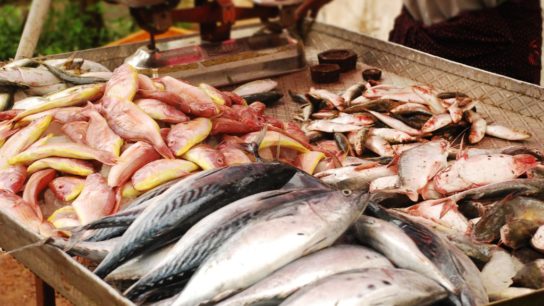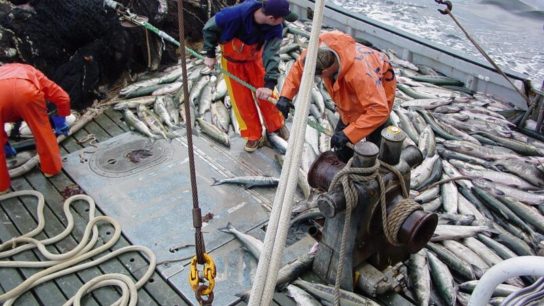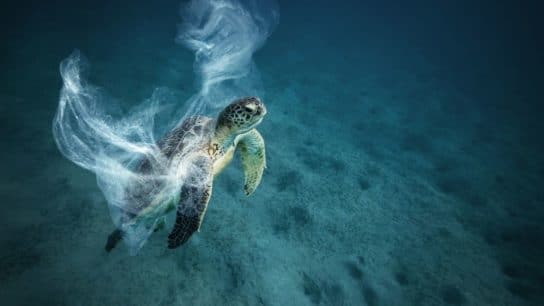According to a new study, ocean trawling generates a similar amount of carbon emissions to the global aviation industry, driven by activity in Chinese national waters. Ocean trawling has long been condemned for destroying natural marine ecosystems and depleting fish populations, prompting concern over how to tackle the problem.
—
What is Happening?
- Ocean trawling involves dragging heavy nets across the seafloor and is responsible for between 0.6 and 1.5 gigatonnes of carbon emissions a year, compared with the aviation industry’s emissions of close to 1Gt, according to the study. Global aviation produces about 2% of all human-induced carbon emissions.
- The researchers used satellite data based on fishing activity between 2016 and 2019, and found that roughly 1.3% of the ocean was trawled each year, releasing up to 1.5Gt of CO2, a finding they said was “a preliminary best estimate.”
- The majority of these emissions from trawling occurs in less than 4% of the ocean, in the fishing waters of coastal nations known as “exclusive economic zones.”
- By country, trawling by boats in Chinese waters generates the greatest volume of emissions, representing about 770 million metric tonnes of carbon, while Russia, then Italy and then the UK caused the next most pollution. The UK emits roughly 370 million metric tonnes of carbon a year.
- Oceans play a critical role in absorbing heat and atmospheric carbon dioxide, with Trisha Atwood of Utah State University and a co-author of the paper calling the ocean floor the “world’s largest carbon storehouse.”
- Sediment on the seafloor acts as a carbon sink where emissions are stored by trawling nets disrupt the seabed and release the gas back into the water. This means that the ocean has less capacity to absorb atmospheric carbon, and some of this newly released carbon is likely to escape into the air.
- Most trawling occurs within economic zones. Ironically, many of the priority areas for conserving marine biodiversity were also found to be within these zones, however the study says that these priority areas will change as the world warms. They finger Arctic waters as those that will be important for conservation by 2050. Naturally then, the study recommends that trawling within economic zones be banned.
- The study said governments could achieve the triple benefits of carbon savings, increased marine biodiversity and greater fishing yields by protecting larger areas of the ocean. It also endorsed an international initiative to protect at least 30% of the world’s oceans by 2030.
- Besides the carbon benefits of protecting certain areas, it would also help restore marine biodiversity and increase fishing yields. If 28% of the ocean was protected and fishing activity was redistributed evenly across non-protected regions, yields could increase 5.9 million tonnes.
You might also like: Corals in Fiji Are Bouncing Back After a Devastating Cyclone
Reniel Cabral, a co-author of the study, says, “When overfishing and other damaging activities cease, marine life bounces back.”
Featured image by: Wikimedia Commons

















